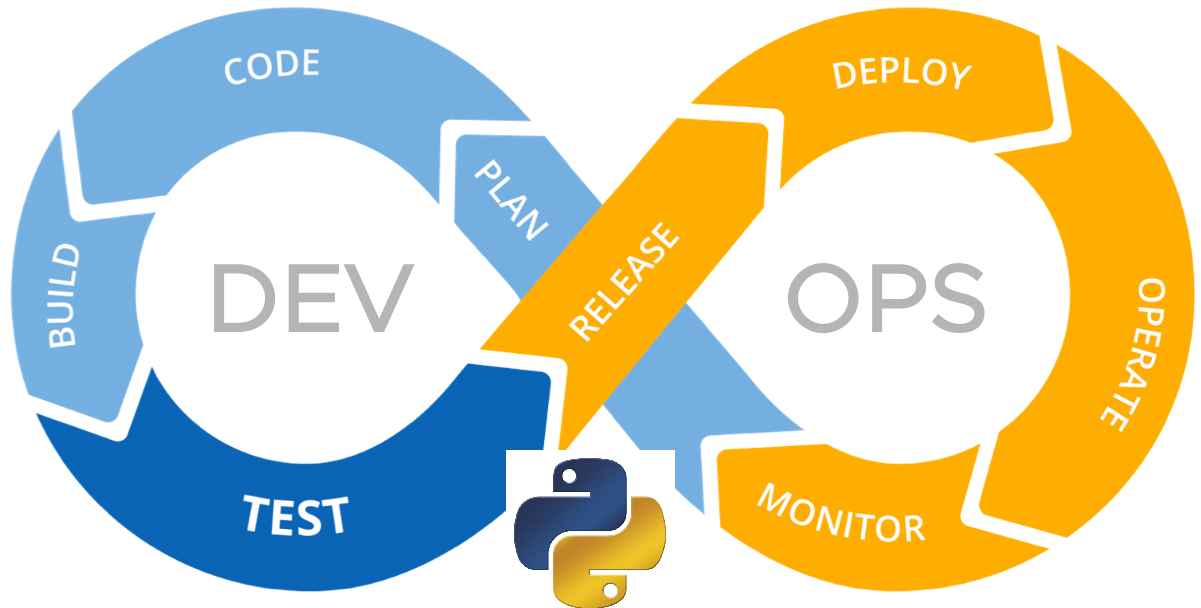Python For DevOps
 Nitish Chintakindi
Nitish Chintakindi
Introduction
Python is a universal programming language widely adopted in DevOps. Explore its data types, structures, and libraries, all key for simplifying processes and driving efficiency in software development and operations.
What is Python?
Python is one of the best programming languages for Automation in DevOps. DevOps teams use Python for automating repetitive tasks, infrastructure provisioning, and API-driven deployments.
Python is a high-level, interpreted, interactive and object-oriented scripting language. Python is designed to be highly readable. It uses English keywords frequently as other languages use punctuation, and it has fewer syntactical constructions than other languages.
Python is Interpreted − Python is interpreted, allowing you to run programs without compiling first.
Python is Interactive − Python is interactive, letting you interact directly with the interpreter.
Python is Object-Oriented − Python is object-oriented, organizing code into objects.
Python is a Beginner's Language − Python is beginner-friendly and ideal for various apps from text processing to games.
Empowering DevOps with Python: Key Features
Automation: Python automates repetitive tasks, streamlining DevOps workflows.
Scripting: Python scripting facilitates process automation and integration.
Configuration Management: Tools like Ansible use Python for configuring systems.
Continuous Integration: Python helps create CI/CD pipelines for seamless code integration.
Monitoring: Python scripts monitor and analyze system metrics.
Cloud Computing: Python interfaces with cloud services for efficient management.
Containerization: Python enhances Docker management and orchestration.
Infrastructure as Code (IaC): Tools like Terraform utilize Python to define infrastructure.
API Integration: Python connects tools via APIs for seamless communication.
Data Handling: Python processes data for insights in DevOps analytics.
Essential Data Types in Python
| Text Type: | str |
| Numeric Types: | int, float, complex |
| Sequence Types: | list, tuple, range |
| Mapping Type: | dict |
| Boolean Type: | bool |
| None Type: | NoneType |
Examples:
- Text Type (str):
text = "Hello, Python!"
- Numeric Types:
integer = 10
floating_point = 3.14
complex_number = 2 + 3j
- Sequence Types:
list_data = [1, 2, 3, 4]
tuple_data = (5, 6, 7)
range_data = range(0, 5)
- Mapping Type (dict):
student = {
"name": "John",
"age": 20,
"grade": "A"
}
- Boolean Type (bool):
is_valid = True
is_empty = False
- None Type (NoneType):
result = None
Python Data Structures in DevOps

List
A list is a collection of ordered and changeable items.
It's created using square brackets and can hold elements of different data types.
fruits = ["apple", "banana", "cherry", 1 , 90.8]
Dictionary
A dictionary is a collection of key-value pairs.
It's created using curly braces and each pair is separated by a colon.
student = { "name": "John", "age": 20, "grade": "A" }
Tuple
A tuple is a collection of ordered and unchangeable items.
It's created using parentheses and can hold elements of different data types.
colors = ("red", "green", "blue")
Set
A set is a collection of unordered and unique items.
It's created using curly braces and holds distinct values.
unique_numbers = {1, 2, 3, 4}
OS module: primarily useful for the DevOps
The os module in Python is quite useful in DevOps for interacting with the operating system and managing system-related tasks. Some key functions that are frequently used in DevOps are:
os.path: Offers functions to manipulate file paths, making it useful for managing file systems.
os.listdir: Retrieves a list of files and directories in a specified path.
os.makedirs: Creates directories, which are essential for setting up project structures.
os.remove: Deletes a file.
os.rmdir: Removes an empty directory.
os.system: Runs shell commands from within Python.
os.getenv: Accesses environment variables, crucial for configuration.
os.walk: Generates directory and file names recursively within a specified path.
os.chmod: Changes file permissions, necessary for security configurations.
os.rename: Renames a file or directory.
os.chdir: Change the current working directory, which is important for navigating and executing commands in different directories.
os.path.exists: Check if a path exists.
os.path.isfile: Check if a path points to a file.
Thanks for being till the end of the blog. I hope that this blog helps you to understand python for devops.
Subscribe to my newsletter
Read articles from Nitish Chintakindi directly inside your inbox. Subscribe to the newsletter, and don't miss out.
Written by

Nitish Chintakindi
Nitish Chintakindi
Learning DevOps Tools and Technologies 🤝 Looking forward to help and collaboration with Community Building, Code Projects & Open Source. Join me on this thrilling DevOps journey as we embrace innovation, automation, and a brighter future for software development🎉 Let's build a seamless digital world together🌐💻